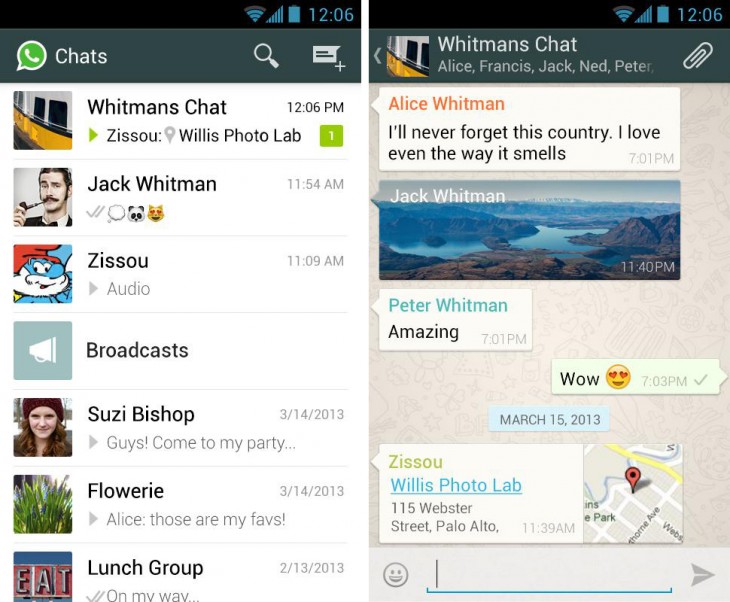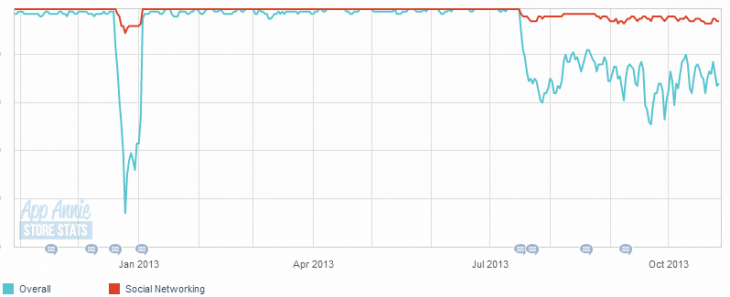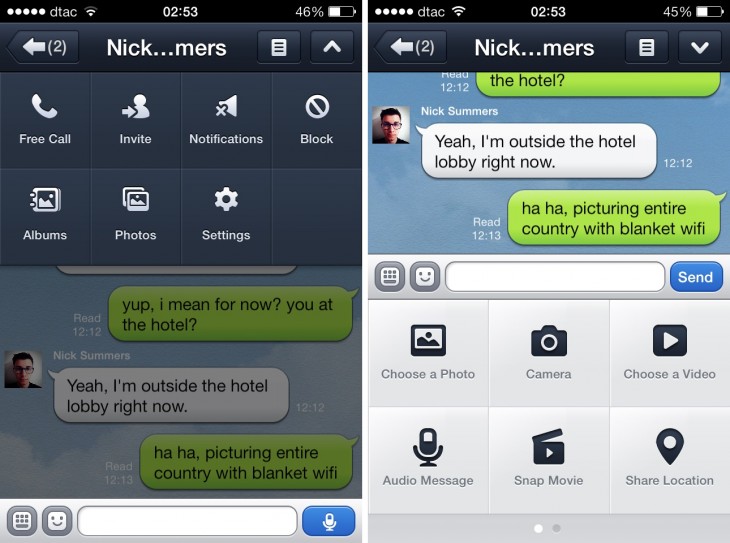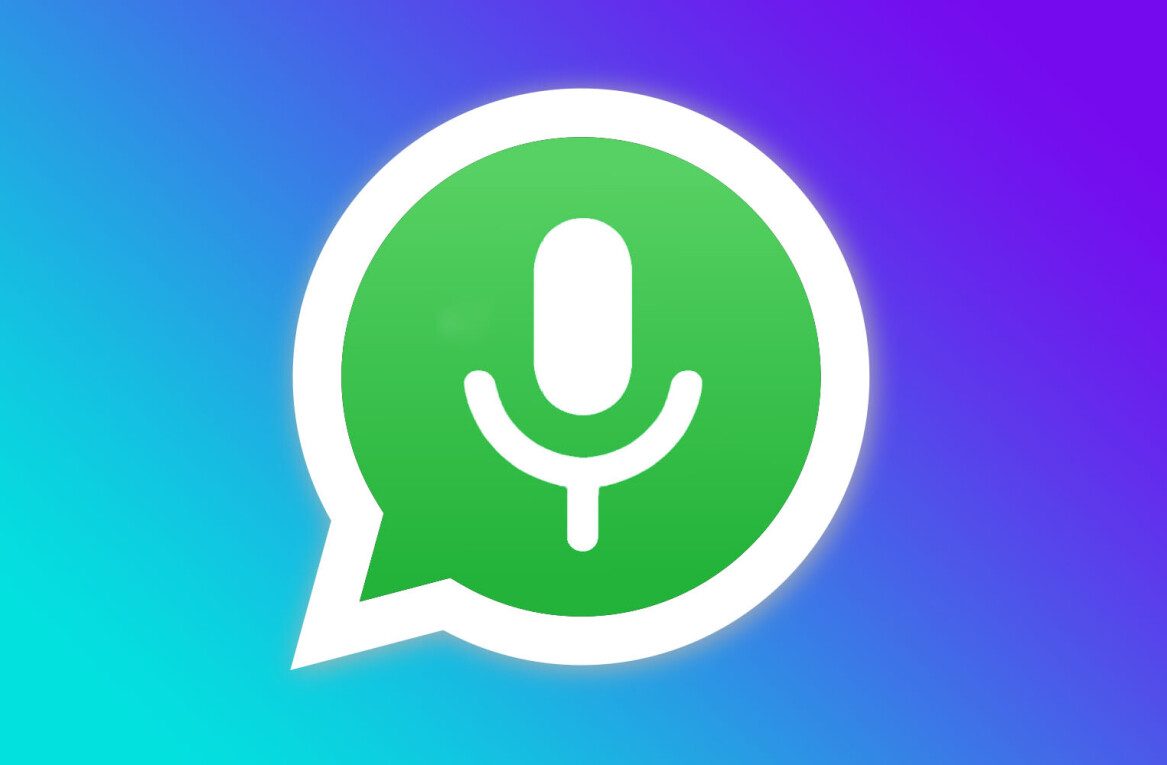
It’s been quite a week for messaging startup WhatsApp. Fresh from announcing that his company now has 350 million active users each month, WhatsApp CEO Jan Koum rounded things off this Sunday by revealing that its users share more than 400 million photos daily.
To be clear, that figure refers to the number of photos that are sent by users, not the total received; a distinction that is often confused when measuring messages sent.
Every day our users share over 400 million photos via WhatsApp… #erlang #freebsd
— jan koum (@jankoum) October 27, 2013
That’s not at all bad for a messaging app, to put it lightly, particularly when you consider the number of daily photos shared on other services, as analyst Benedict Evans did.
Just last month, Snapchat revealed its users are sharing 350 million photos per day, that’s the same number that Facebook sees daily — as of September — which might explain why Mark Zuckerberg apparently lodged an unsuccessful $1 billion-plus bid for the service.
Instagram sees 55 million photos per day, on average, for what’s worth. Since no other messaging apps reveal their daily photo numbers, we’re not able to compare WhatsApp to its peers.
There’s little doubt that WhatsApp is on a tear though, its growth is quite something. The service hit 200 million monthly active users in April of this year and, based on its recent progress, it could double that by the end of the year.
These figures show a vast number of active users and high levels of engagement, WhatsApp is winning the battle by some margin. Its nearest rival WeChat had just over 235 million monthly active users as of August — although most are based in China — and none of its other main rivals have revealed their active user bases, instead preferring to tout their registered user numbers.
Koum’s response to that is amusing. He is right that direct comparisons are the only true measurement, and it seems quite possible that WhatsApp’s dominance is a major reason some of its rivals are avoiding providing a basis for that comparison:
Comparing total registered users and active users is like comparing Ferrari 250 GTO with a skateboard.
— jan koum (@jankoum) May 1, 2013
Yet, despite this huge lead, it isn’t for sure that WhatsApp will continue to dominate in the US and other markets in the West and worldwide.
Are people bored of WhatsApp?
WhatsApp’s success appears to be down to its decision to eschew the feature-rich approach of many apps, as much as it is about early mover advantage. First launched in 2009, the service has a simple design that makes it easy for even the least tech-savvy folk to use.
But, with other apps adding games, stickers, video calling and other features, are users seeking more than the bare bones experience offered by WhatsApp?
Data from now-Facebook owned app analytics firm Onavo suggests that the service’s phenomenal growth is slowing, at least in the US and on iOS, as BGR reported:
The number of iPhone owners using WhatsApp on a monthly basis has now fallen for three straight months, dropping from 9.25 percent in May to 7.97 percent in August. What is even odder, the rate of decline seems to be accelerating.
This is in stark contrast with Kik, which has increased its engagement from 4.81 percent to 5.83 percent between May and August. Or GroupMe, which has moved from 2.45 percent to 2.81 percent.
Stats from App Annie, another much referenced analytics firm, show WhatsApp has ranked consistently high over the past year, but there has been a recent wobble over the past few months:
The first dip occurs during the Christmas period — when more exciting apps typically leap up the charts — but the recent zig-zagging is different. It could be due to changes to the App Store algorithm, in favor of free apps over those that are paid-for, but the possibility remains that a level of fatigue is setting in for US consumers.
The stats are similar for the UK, France, Germany and other countries.
Are people in these places seeking more than just the basics from a messaging app, is WhatsApp approaching saturation, or is the competition cutting into its growth? The answer may differ depending on your point of view.
Update: WhatsApp has clarified that the changes in the chart coincide with the introduction of a new pricing model for iOS that made the app free to download, with a $0.99 in-app payment required each year after the first 12 months. This change in distribution may well have had a bearing on the recent App Store fluctuations.
One interesting example where WhatsApp has fought the competition is Spain, where Line claims over 15 million downloads following an extensive marketing campaign. Yet, despite these downloads, WhatsApp appears to have maintained its grip on the market as the most actively used messaging app — also seeing off competition from WeChat, which recruited Barcelona football star Lionel Messi to front its latest advertising campaign.
http://www.youtube.com/watch?v=CpyL9JveyhQ
The platformization of messaging apps
The WhatsApp business model is as straightforward as its design: users pay $0.99 per year for unlimited access. No features are restricted and WhatsApp is free from ads, marketing and games.
We don’t know how many registered users WhatsApp has, but, with 300 million active users, it’s fair to say it could have anything between 500 million and 1 billion active subscriptions at any one time. That’s pretty impressive, and the decision to buy/renew for $0.99 is easy if your friends are all using it.
However, WhatsApp is likely to come under increasing pressure from free messaging apps (if it isn’t already) which operate under an entirely different business model: content distribution.
Line is one company that is pursuing that business model, which we recently described thusly:
Line is really a content and communications platform on mobile.
Already it acts as a network for distributing games, digital content and there are plans to introduce e-commerce, music and perhaps other services in the future. The company also makes money by charging companies to use its network to communicate advertising and marketing messages to users that opt-in to receive them.
It isn’t just that financials are different — Line’s revenue is at over $0.5 billion per year based on its last quarter of business, which was up 45 percent quarter-on-quarter — but the user experience is more developed that WhatsApp. There’s free video and voice calling, connected games/apps, stickers and more.
Line isn’t alone in pursuing this approach although it is perhaps the most aggressive, thanks to a sizable marketing and advertising budget, and a roster of more than 30 ‘connected’ games and apps.
Korea’s Kakao Talk and China’s WeChat — both of which dominate their respective domestic markets and are pushing out internationally — follow a similar approach, but, perhaps more telling, is that Tango, Kik and even BlackBerry’s BBM, three WhatsApp rivals with a core audience in the US, also include gaming and other content.
Parts of Asia have always been early adopters and particular keen on content — ‘Web toons’ are bigger than Facebook in Korea, for example — but the Asian messaging business model is beginning to take root among non-Asian businesses, the question is whether users are open and ready for it?
What will it take to win?
This Venture Beat post argues that the companies and apps that provide “a deeper and richer experience” will win the fragmented mobile messaging space. Thinking along those lines, it remains to be seen if simplicity will continue to triumph over multimedia.
If multimedia and content are what it takes to win, then WhatsApp is in a difficult position. Most of its rivals are focused on iOS and Android — the two platforms that are most commonly used by developers — but WhatsApp has a seemingly far more diverse base of users.
Koum this week said WhatsApp signs up 250,000 users of Nokia devices per day. That’s a lot of non-iOS and Android, more than 7.5 million new users on Nokia phones each month.
It would be technically difficult to develop a games and content platform that extended to Asha, Nokia’s dated Symbian, BlackBerry and other platforms where WhatsApp is believed to be strong, while likewise finding game developers to cover Windows Phone would not be straightforward.
Perhaps then, it’s no surprise that Koum and WhatsApp are firmly against gaming and other non-messaging services.
To date, the theory of simplicity over features hasn’t really been put to the test in western markets, but in many parts of Asia there’s little doubt that WhatsApp has lost market share to Line, WeChat and others, although many users do use more than one messaging app. But as the Asian apps increase their focus and marketing budgets for global expansion, and Kik, Tango and others continue to develop their services, the question is whether Western markets will stick to simplicity?
Get the TNW newsletter
Get the most important tech news in your inbox each week.







